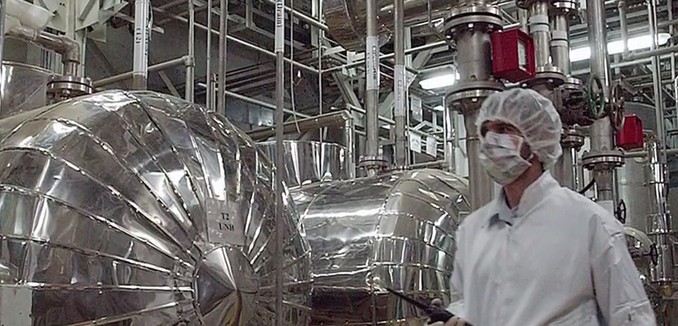The British newspaper The Sunday Times reported today that according to a former International Atomic Energy Agency (IAEA) official, Iran may have thousands more centrifuges than it has declared to the IAEA.
The Times quoted the concerns of Olli Heinonen, who worked for the IAEA for 27 years. During his tenure at the IAEA, Heinonen headed the Department of Safeguards, which is responsible for preventing nuclear proliferation.
“They have manufactured 1000 IR-2m centrifuges that the IAEA is aware of and the negotiations with the US are going to focus only on the known 1000 IR-2m and 18,000 IR-1 and not the additional centrifuges,” said Mr Heinonen, a senior fellow at Harvard University’s Belfer Centre for Science and International Affairs.
“There are indications Iran has acquired carbon fibre, the key raw material for the advanced IR-2m centrifuges, to manufacture several thousand. The IAEA has seen 1000 of them in Natanz and the key question is: where are the rest?” …
“It is important to have in this verification scheme an agreement that the IAEA can also verify all the centrifuges in Iran and not only those which are in Natanz or Fordow,” he said.
The Institute for Science and International Security, a think tank, has previously reported on the unaccounted-for carbon fiber. While the institute doesn’t believe that Iran has enough carbon fiber for “thousands” of IR-2m centrifuges, there is still reason for concern.
With 1,000 IR-2m or IR-4 centrifuges, Iran could break out and produce enough weapon-grade uranium for a nuclear weapon using a stock of low enriched uranium relatively rapidly. Moreover, if Iran successfully develops these centrifuges at the [Pilot Fuel Enrichment Plant at Natanz], it could manufacture this number over several months, assuming it has enough raw materials. Installation could start next year at Fordow or at a potentially secret enrichment site. Furthermore, a secret enrichment facility containing this number of advanced machines would be considerably smaller than the Fordow facility and more difficult to locate.
The fear that Iran may have an undeclared enrichment facility is borne out by history. The enrichment facility at Natanz was only acknowledged by Iran after it was revealed by a dissident group, National Council of Resistance of Iran, in 2002. The location of the Fordow facility was announced in a joint statement by President Barack Obama, President Nicholas Sarkozy, and Prime Minister Gordon Brown in 2009. Iran had previously acknowledged the existence of a second enrichment facility but not its location.
Last year, after the Joint Plan of Action was signed by Iran and the P5+1 powers, The New York Times reported:
True rollback would mean dismantling many of those centrifuges, shipping much of the fuel out of the country or converting it into a state that could not be easily adapted to bomb use, and allowing inspections of many underground sites where the C.I.A., Europe and Israel believe hidden enrichment facilities may exist. There is no evidence of those facilities now, but, as a former senior Obama administration official said recently, speaking anonymously to discuss intelligence, “there has never been a time in the past 15 years or so when Iran didn’t have a hidden facility in construction.”
[Photo: Nuclear Threat Initiative / YouTube ]




